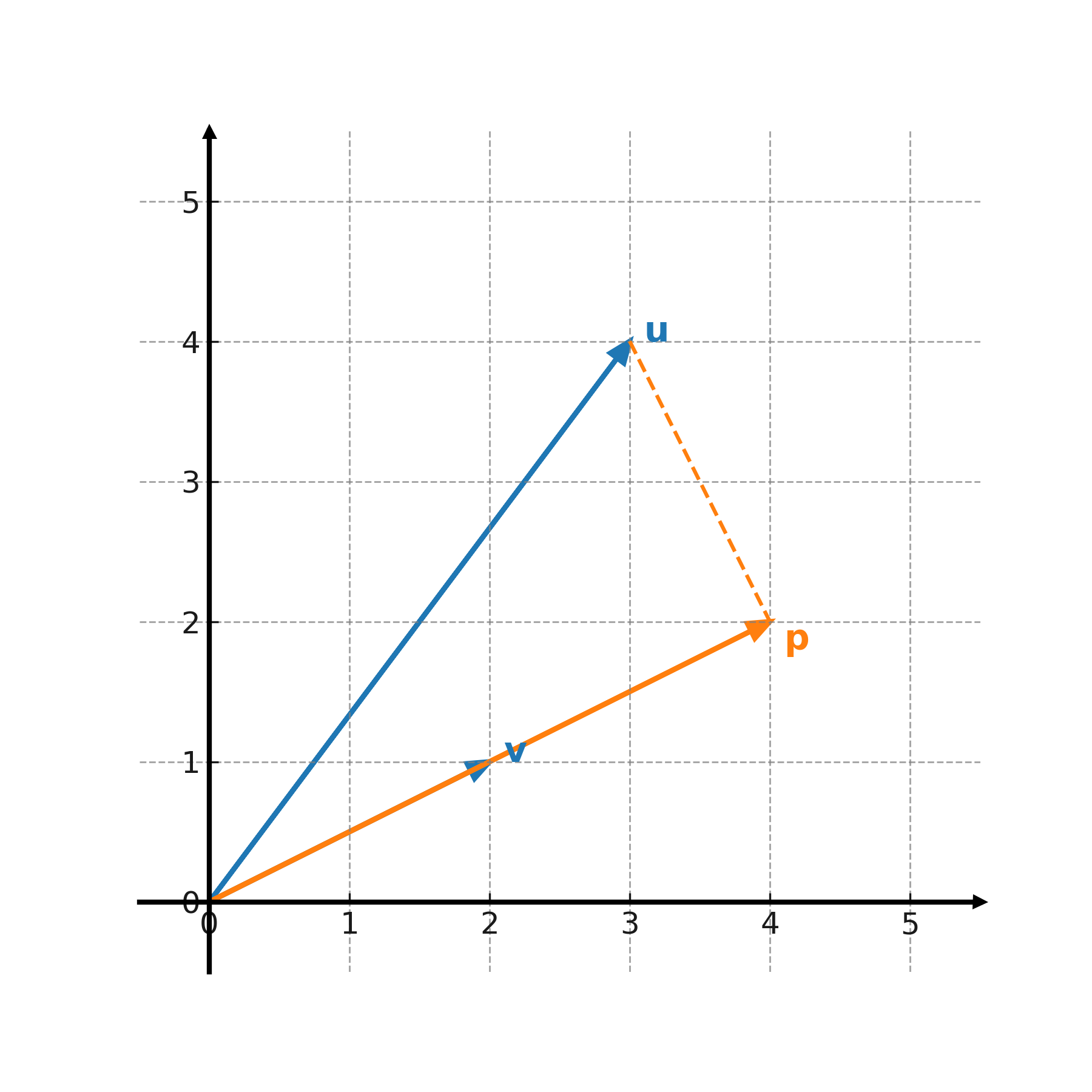Projections
The projection of one vector onto another describes how much of one vector points in the direction of the other. It corresponds to seeing the vector as a shadow cast down onto the other vector.
Definition
The projection of \( \large \mathbf{u} \) onto \( \large \mathbf{v} \) is given by:
$$ \large \text{proj}_{\mathbf{v}}(\mathbf{u}) = \frac{\mathbf{u} \cdot \mathbf{v}}{|\mathbf{v}|^2} \cdot \mathbf{v} $$
Example
We take \( \large \mathbf{u} = (3,4) \) and \( \large \mathbf{v} = (4,0) \).
First, the dot product is calculated:
$$ \large \mathbf{u} \cdot \mathbf{v} = 3 \cdot 4 + 4 \cdot 0 = 12 $$
The length of \( \large \mathbf{v} \) is:
$$ \large |\mathbf{v}|^2 = 4^2 + 0^2 = 16 $$
The projection is therefore:
$$ \large \text{proj}_{\mathbf{v}}(\mathbf{u}) = \frac{12}{16} \cdot (4,0) = (3,0) $$
Geometric interpretation
The projection is the vector that lies on \( \large \mathbf{v} \) and represents the part of \( \large \mathbf{u} \) that points in the same direction. One can think of it as casting a shadow from \( \large \mathbf{u} \) down onto the line through \( \large \mathbf{v} \).
Note: The difference \( \large \mathbf{u} - \text{proj}_{\mathbf{v}}(\mathbf{u}) \) is always perpendicular to \( \large \mathbf{v} \). Thus, a vector can be decomposed into a part along \( \mathbf{v} \) and a part perpendicular to \( \mathbf{v} \).
If the angle between \( \mathbf{u} \) and \( \mathbf{v} \) is greater than \( 90^\circ \), the projection points backward along \( \mathbf{v} \), which gives a negative scalar value in front of \( \mathbf{v} \).

Application
Projections are often used in physics to calculate the component of a force that acts in a specific direction, and in mathematics to find components of vectors along given axes.